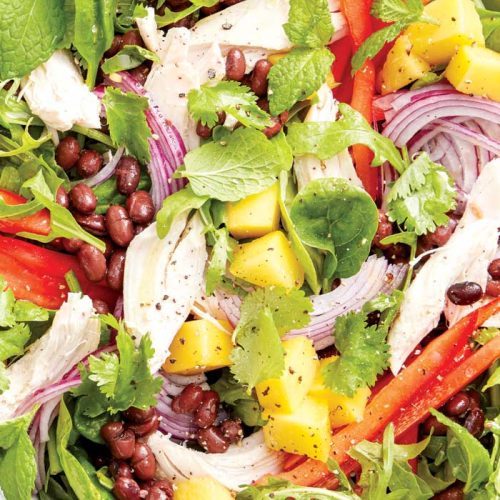
Fasting is lauded as having multiple health benefits and the potential to help some people manage their weight. Healthy Food Guide takes a look at the pros and cons of five styles of intermittent fasting.
The scientific evidence around intermittent fasting is still in its infancy, but it has been associated with a range of health benefits, including helping with weight management, reducing inflammation, improving diabetes management and extending life expectancy.
Fasting is not suitable for everyone, including people with or recovering from eating disorders, children, pregnant people, breastfeeding people, people with high energy needs (such as athletes) and people with certain medical conditions. If you have diabetes, consult your doctor for advice.
If you’d like to try fasting, it’s important to choose a version that fits your lifestyle.
1. 5:2
You eat normally (but healthily) for five days a week and fast on two days a week, eating around 500 or 600 calories. How these calories should be split (for example, into two or three meals), and whether you should fast for two consecutive days or separate them out, can vary.
Is it for you?
Essentially, this is part-time dieting. Restricting food for just two days a week seems manageable to many. Prepare to feel hungry on fast days, though, as you’ll go for 36 hours on just 500–600 calories. (If your last ‘normal’ meal is at 7pm on Sunday, you fast on Monday and don’t return to eating normally until 7am on Tuesday.) However, knowing you can eat the next day may see you through.
2. Alternate days
This involves one day of eating normally followed by one day of fasting, repeated over and over. Plans vary, but some recommend having around 500 calories on fasting days.
Is it for you?
This is a stricter version of the 5:2 plan, with more fast days during the week. It may work better if you prefer a set plan but, because you spend more days fasting, you’re more likely to be short on nutrients and will spend more time feeling hungry. Because it’s quite extreme, you may find it harder to stick with.
3. Whole day
This is a 24-hour fast. You eat just one meal a day – for example, dinner. One popular version is the EatStop-Eat plan, which recommends whole-day fasting once or twice a week.
Is it for you?
This works to significantly restrict calories because it’s difficult (although not impossible) to pack a full day’s worth of calories into just one meal, so you end up with a large calorie deficit. You’ll need to be prepared to feel hungry during the day.
4. Time-restricted
You eat only during set period of time each day and then fast for the remainder of the day. In the 16:8 diet, for example, you limit eating to an eight-hour window and fast for 16 hours, once or twice a week.
Is it for you?
Most people trying this type of fasting will end up eating smaller portions or fewer meals. The real advantage of this style of fasting is flexibility – you can plan your eight hours of eating to fit around work, social activities and family life.
5. Overnight
As the name implies, this means you avoid eating for 12 hours overnight and do most of your fasting while you’re asleep.
Is it for you?
This is one of the easiest ways to fast, and is especially good for those used to snacking or drinking in the evening after eating dinner.
A large glass of wine and a packet of crisps can have 400 calories, so this plan can be a great way to cut out unnecessary and often nutrient-poor calories. If you tend not to snack in the evening, however, it probably won’t make much difference to your normal eating habits.
And one to avoid…
Spontaneous fasting involves simply missing a meal if you’re not that hungry or don’t have time to cook or eat. This approach lacks structure, which can be problematic.
Skipping meals in an unplanned way can leave us unprepared for the resulting hunger, so we’re more likely to grab the first thing to hand – and, of course, that won’t necessarily be a healthy choice.
Article sources and references
- Longo VD & Panda S. 2016. Fasting, circadian rhythms, and time-restricted feeding in healthy lifespan. Cell Metabolism. 23: 1048–59.https://www.ncbi.nlm.nih.gov/pmc/articles/PMC5388543/
- Carter et al. 2016. The effects of intermittent compared to continuous energy restriction on glycaemic control in type 2 diabetes; a pragmatic pilot. Diabetes Res Clin Pract. 122: 106–12.https://pubmed.ncbi.nlm.nih.gov/27833048/
- Chambers, JR. 2021. The 16:8 Intermittent Fasting Lifestyle Plan. Pan Macmillan Australia. Fontana L & Partridge L. 2015. Promoting health and longevity through diet: From model organisms to humans. Cell. 161: 106–18.https://www.panmacmillan.com.au/9781760985158/
- Headland et al 2016. Weight-loss outcomes: A systematic review and meta-analysis of intermittent energy restriction trials lasting a minimum of six months. Nutrients. 8: 354.https://pubmed.ncbi.nlm.nih.gov/27338458/
www.healthyfood.com










